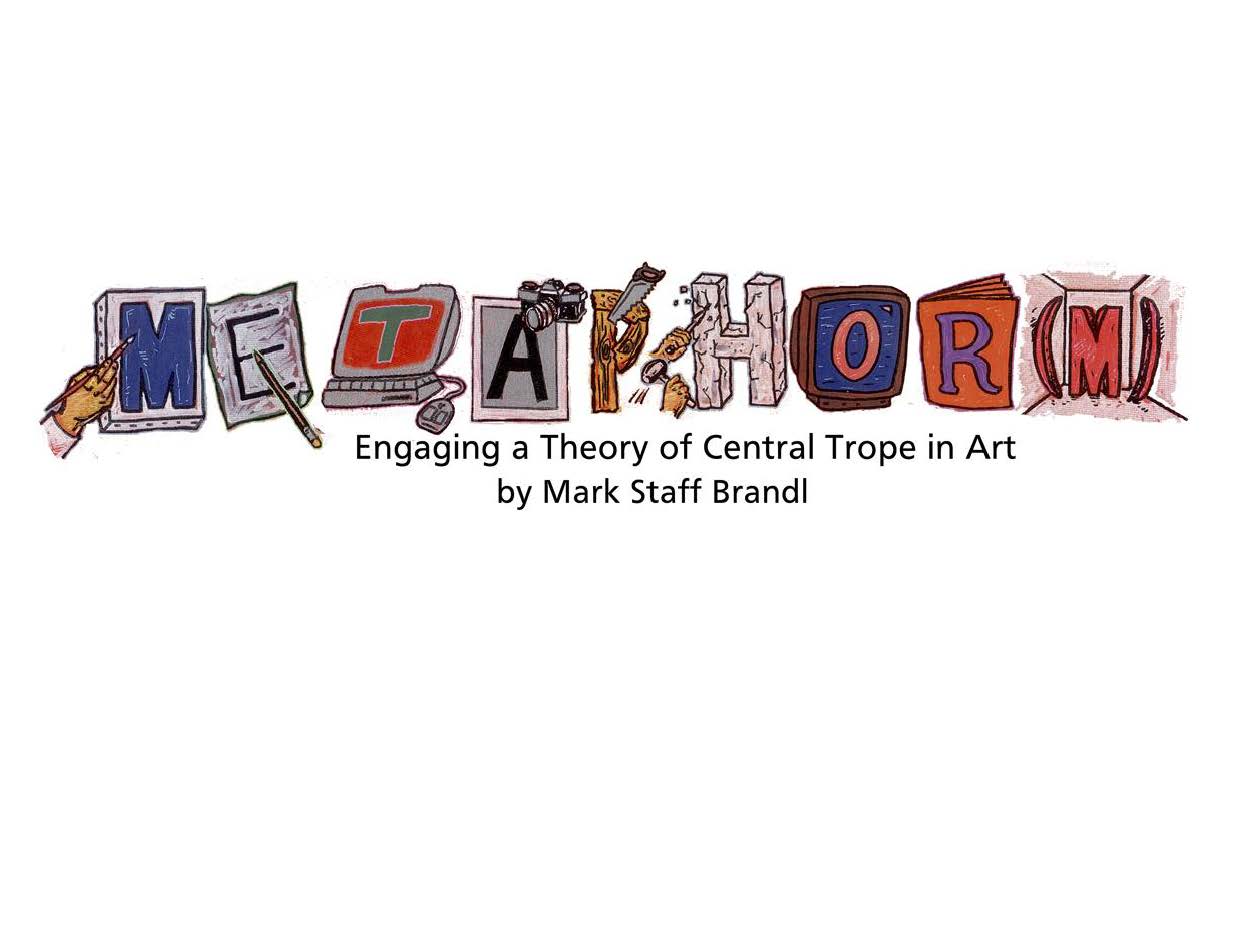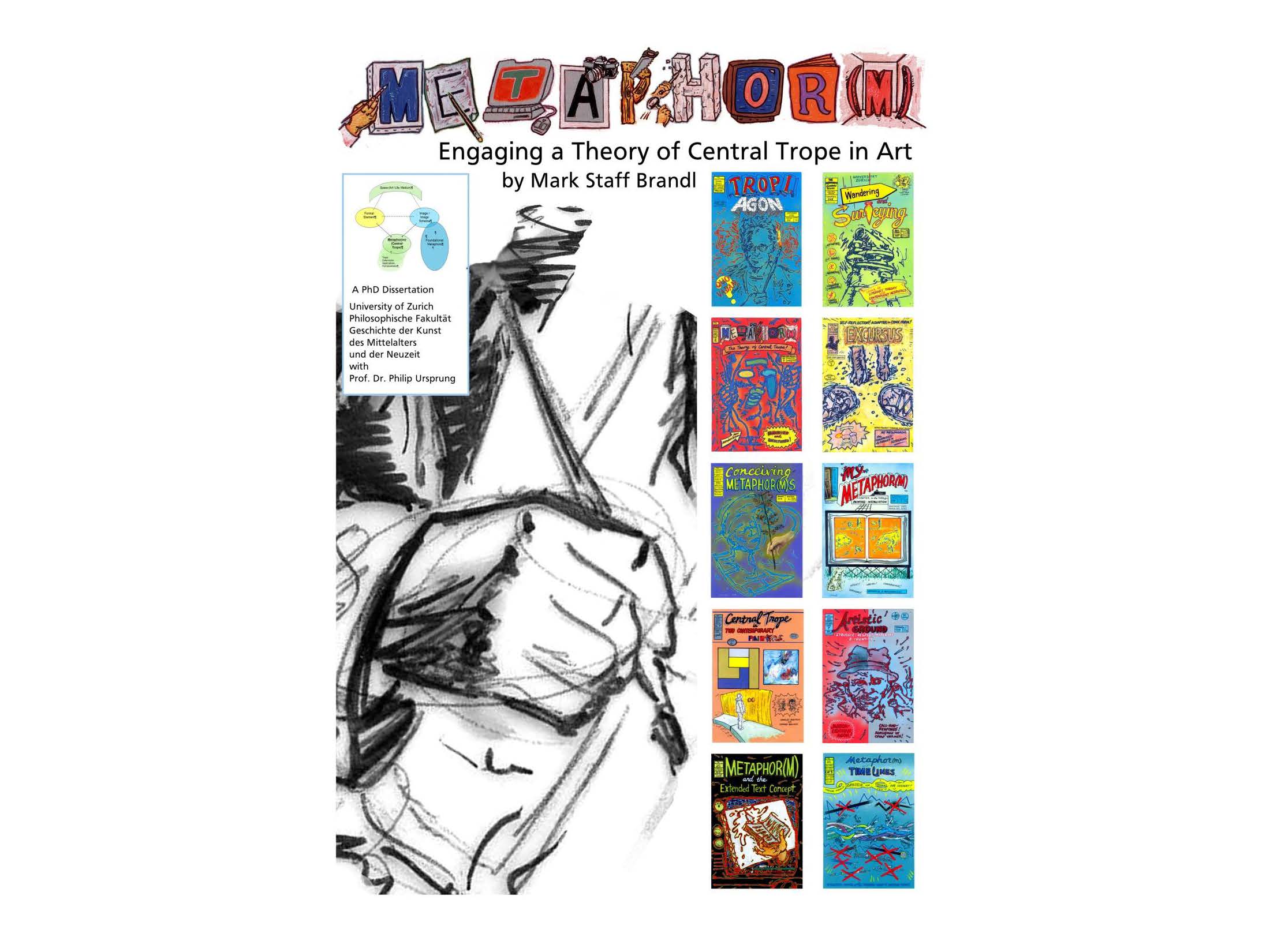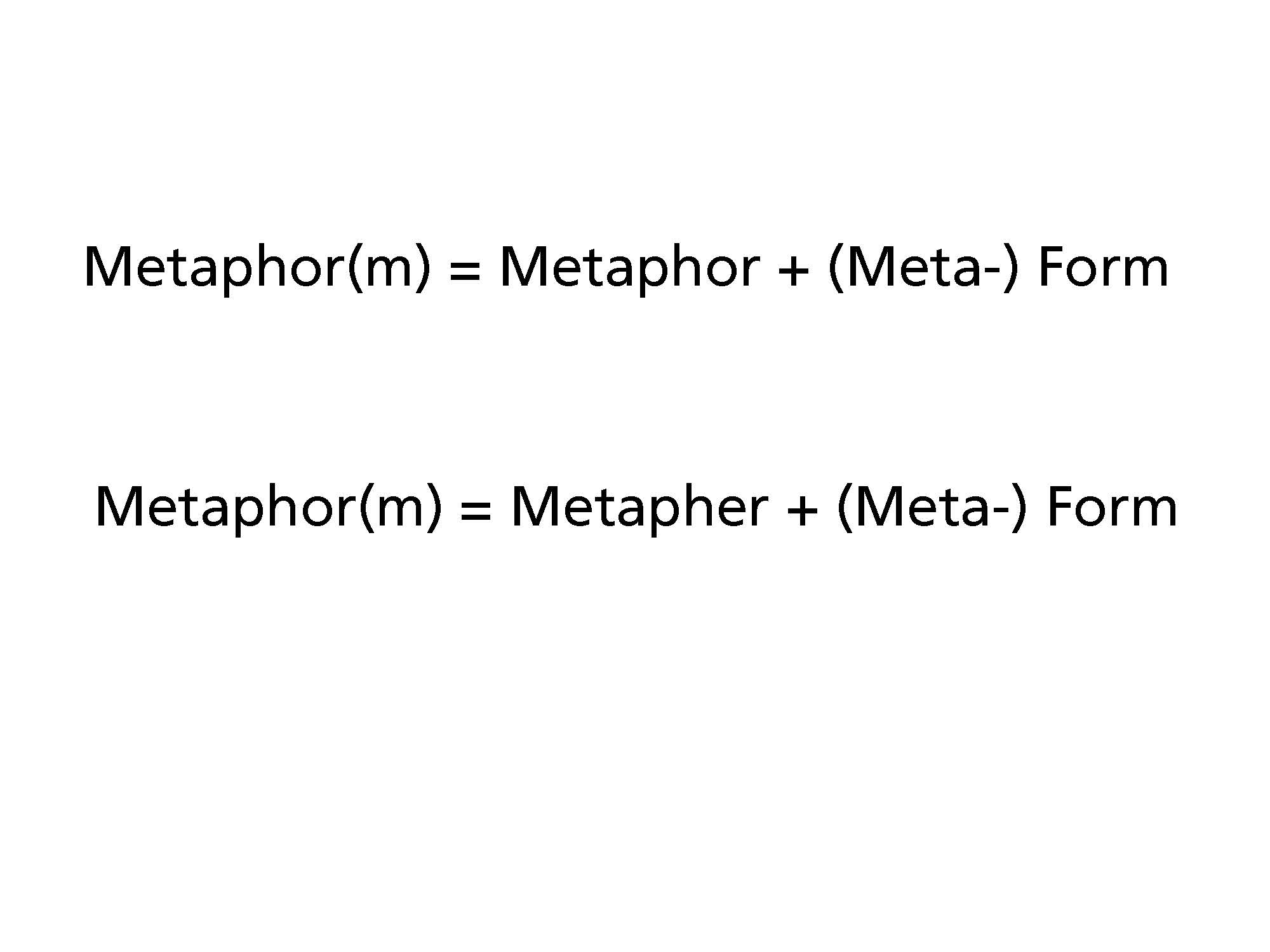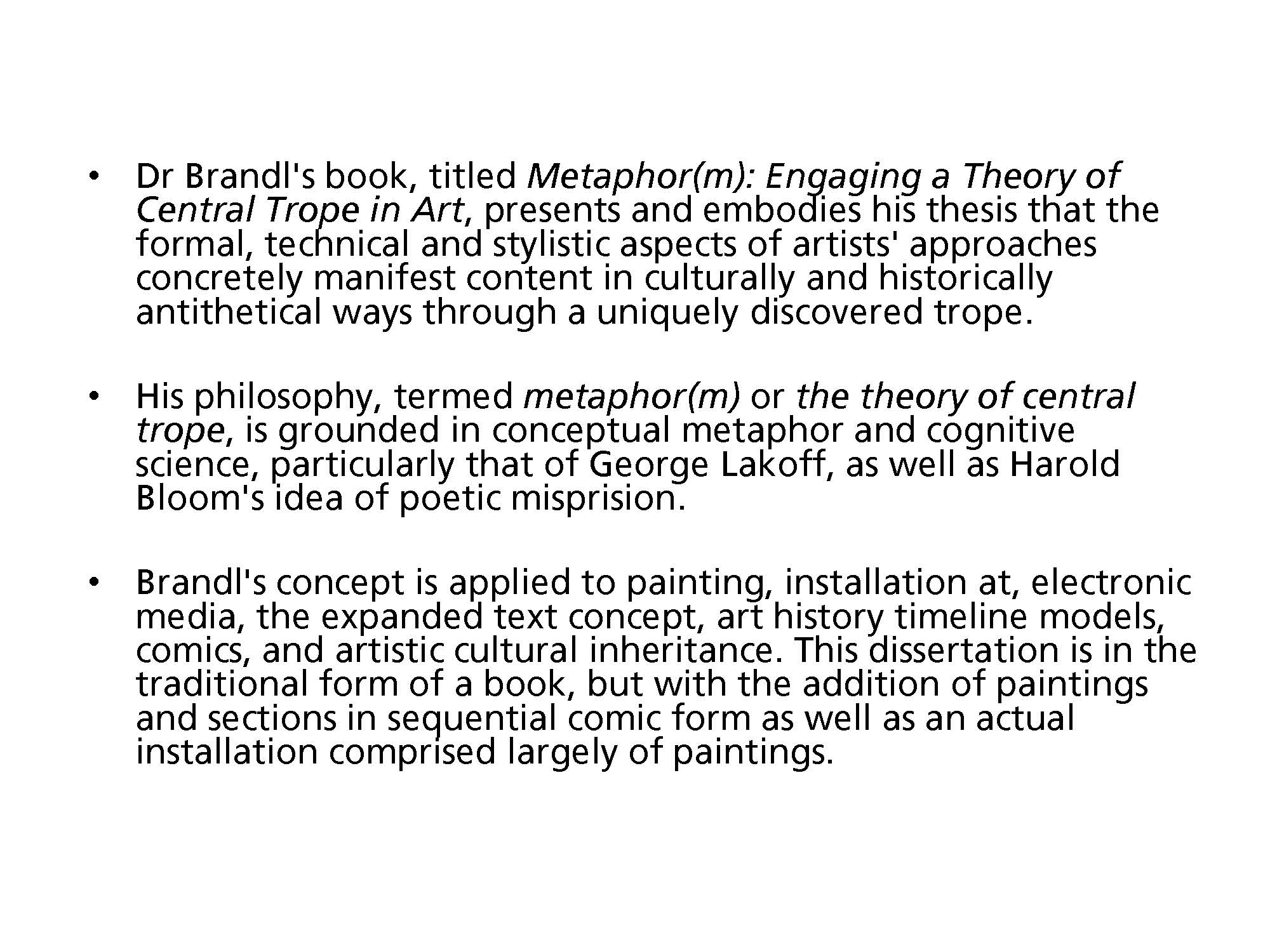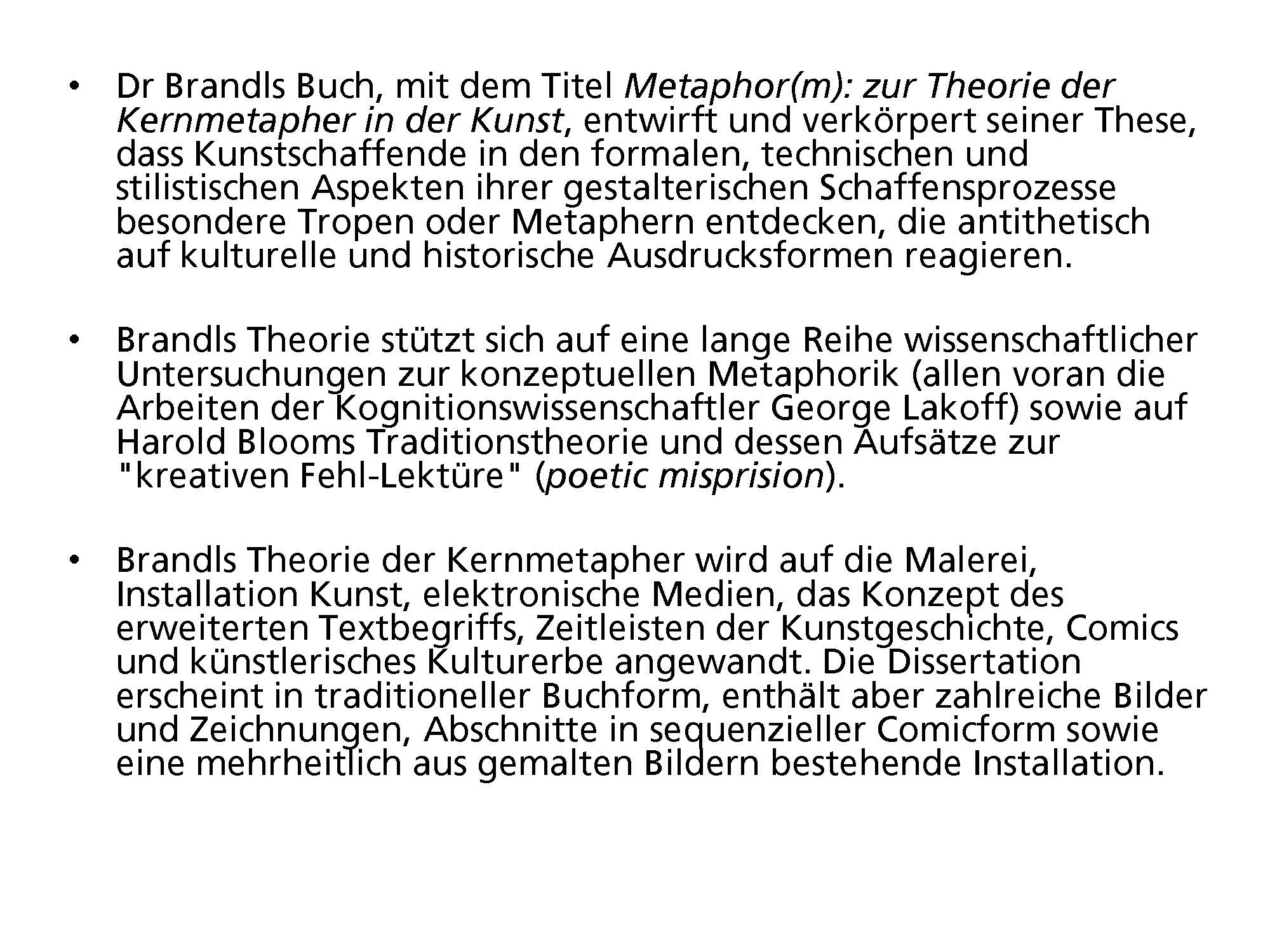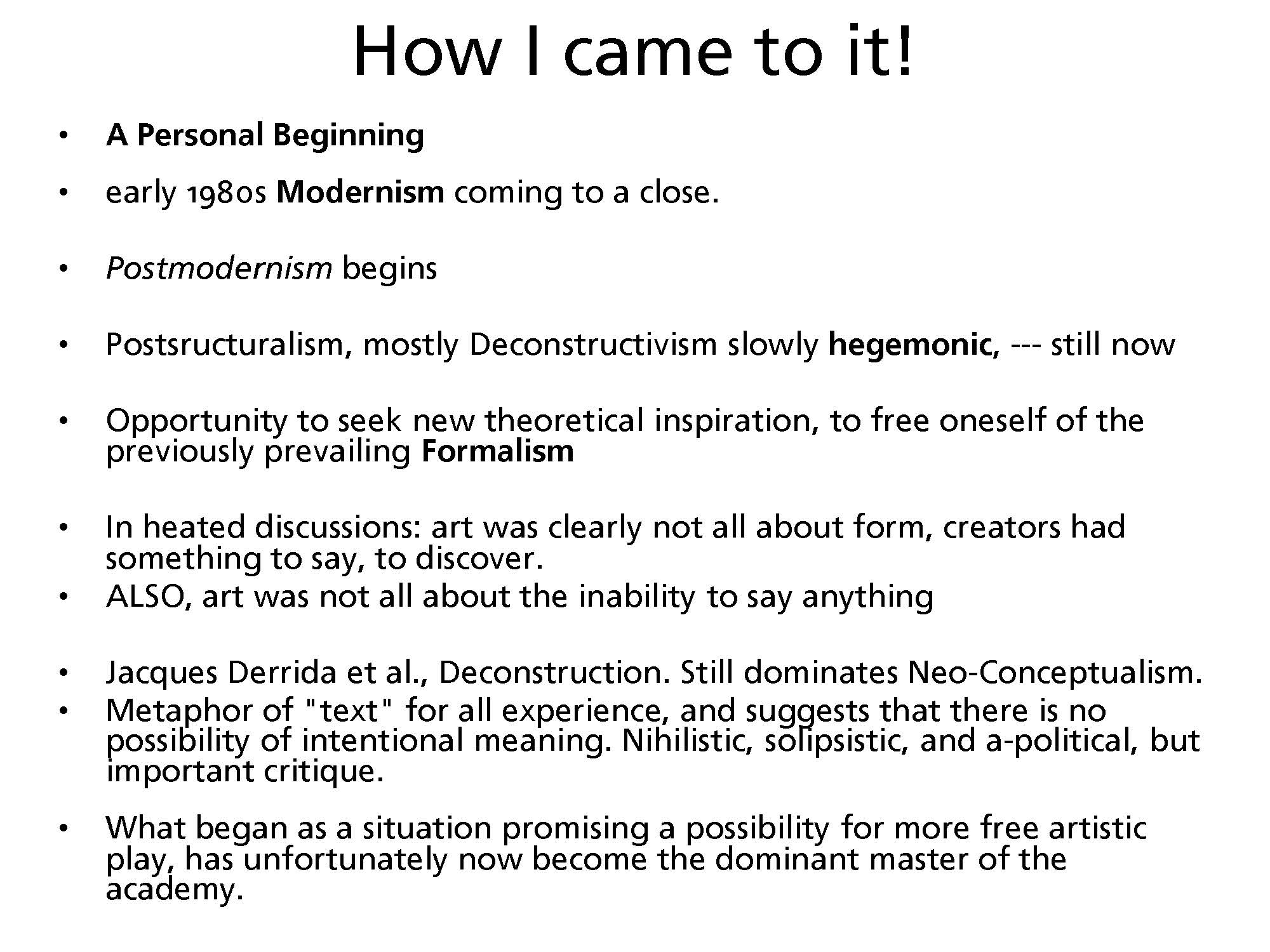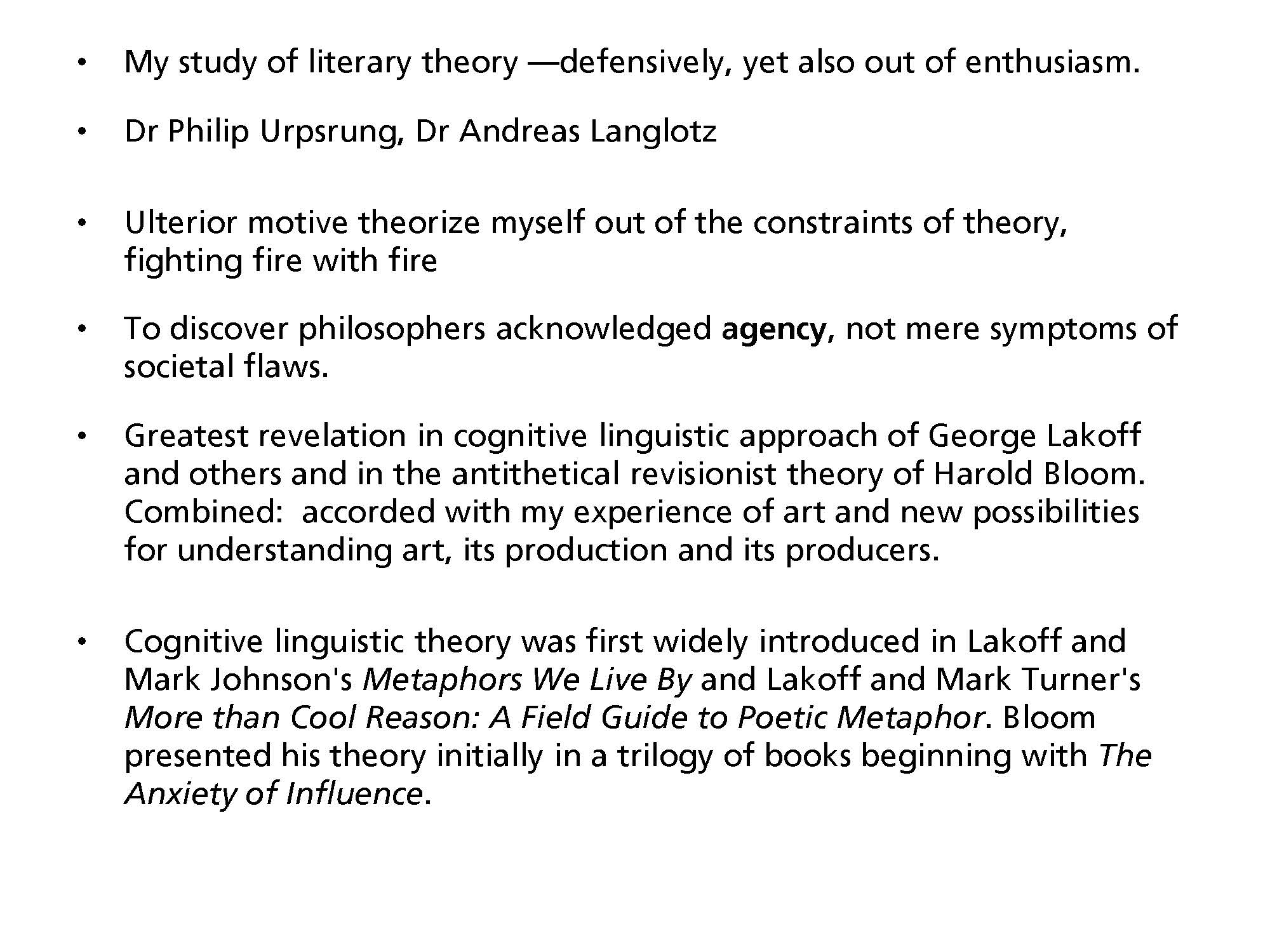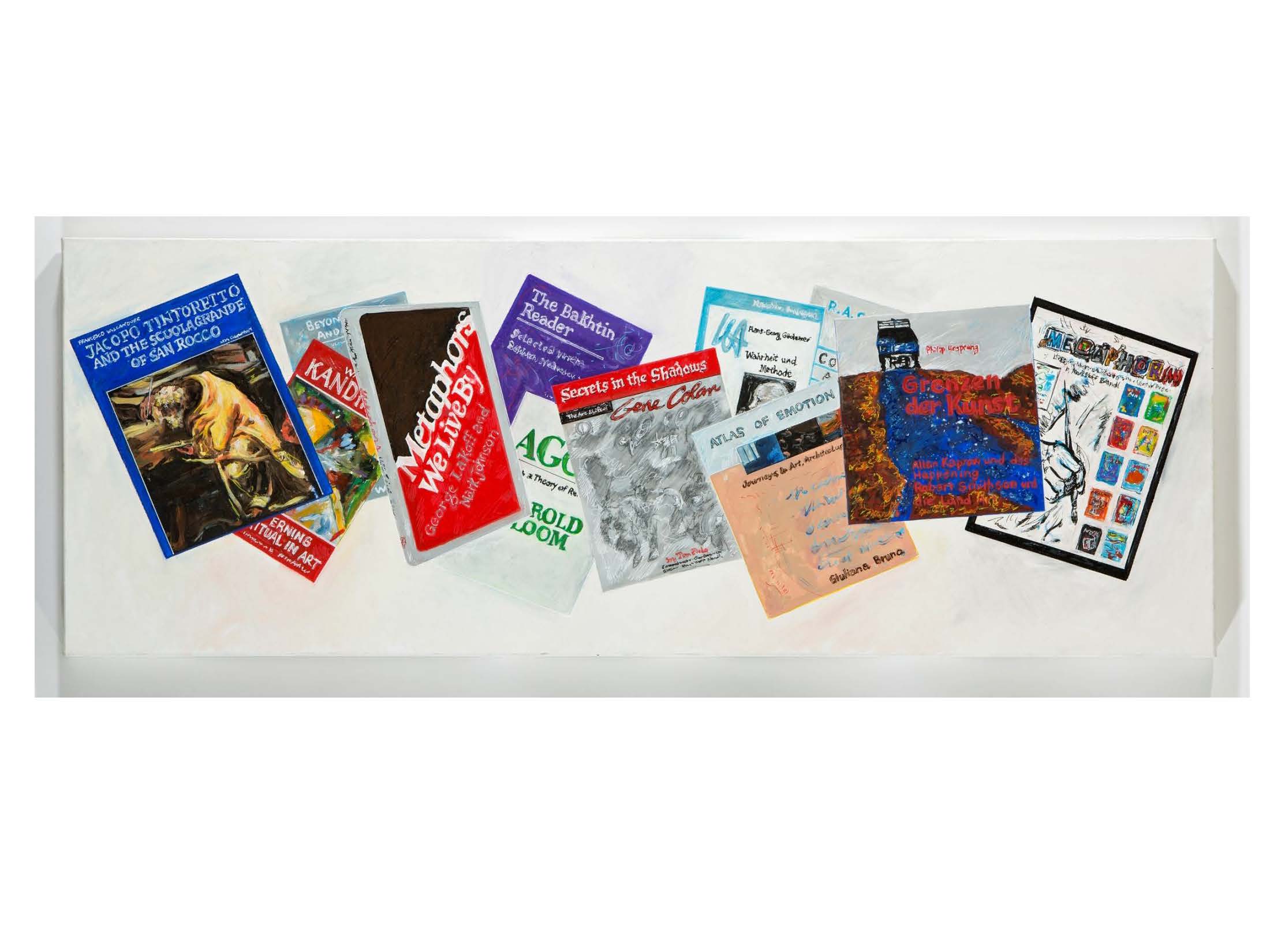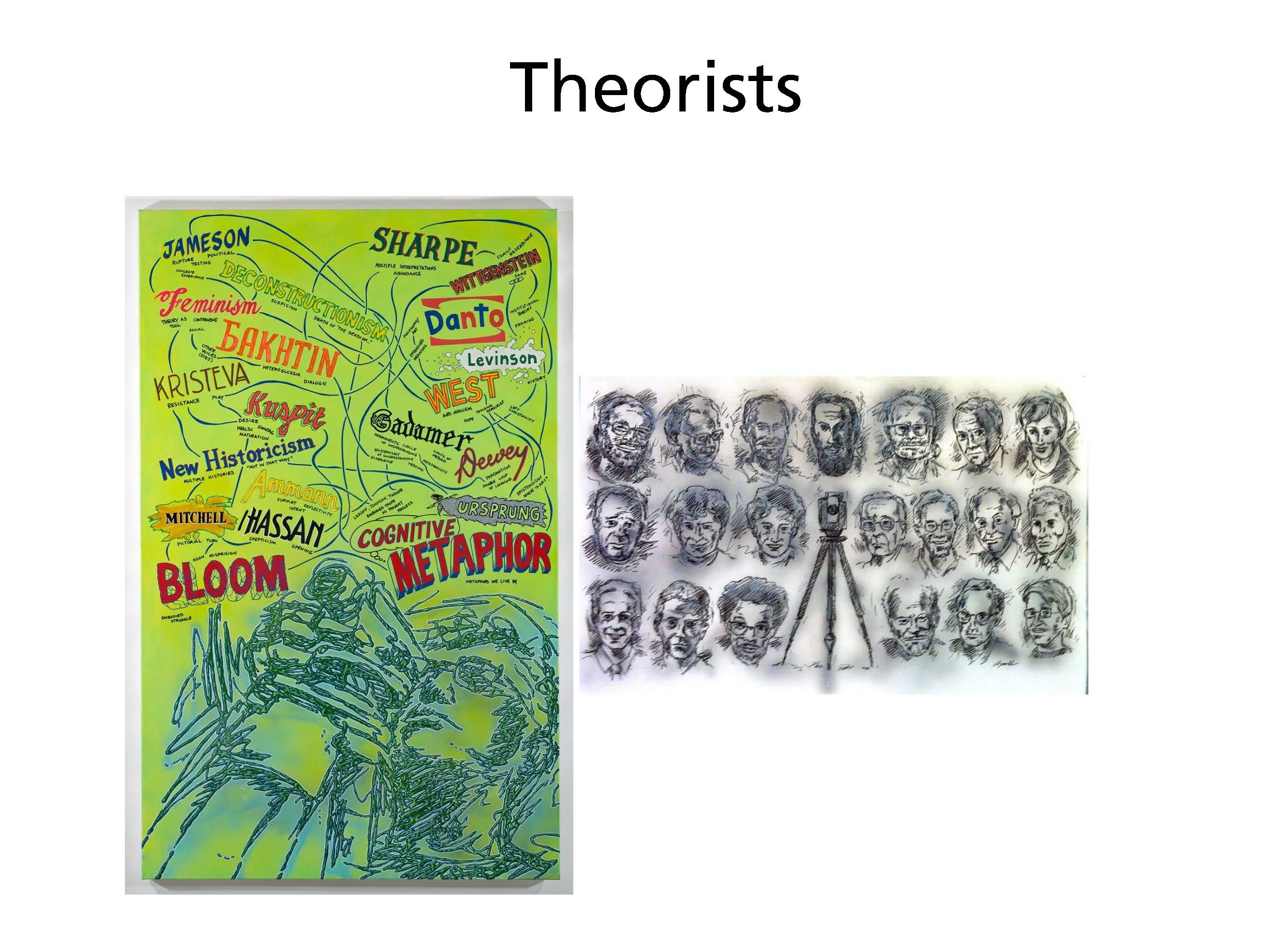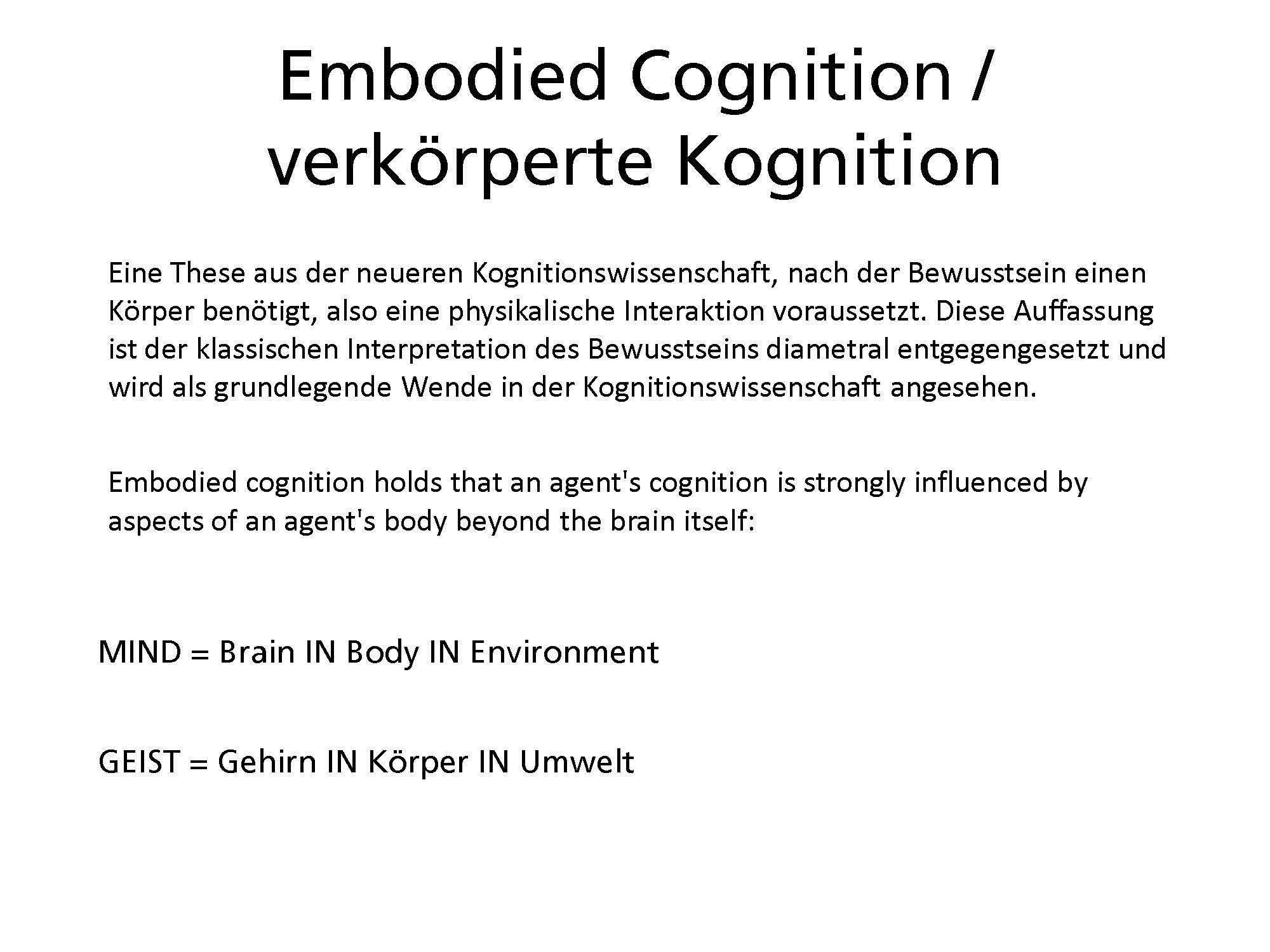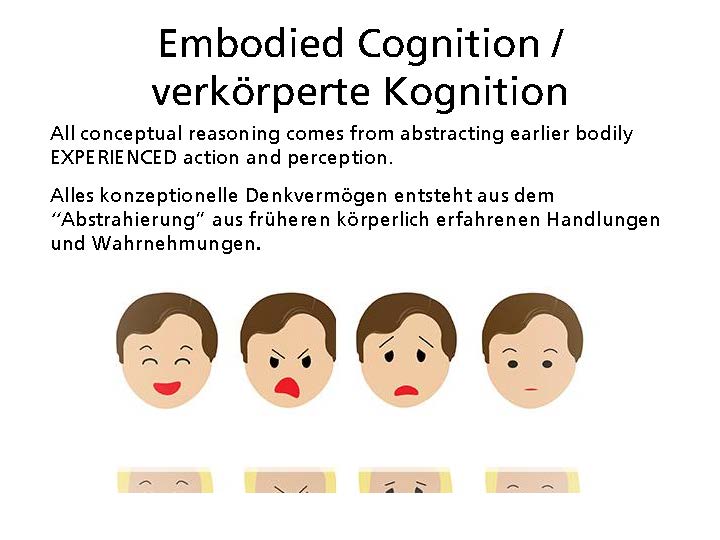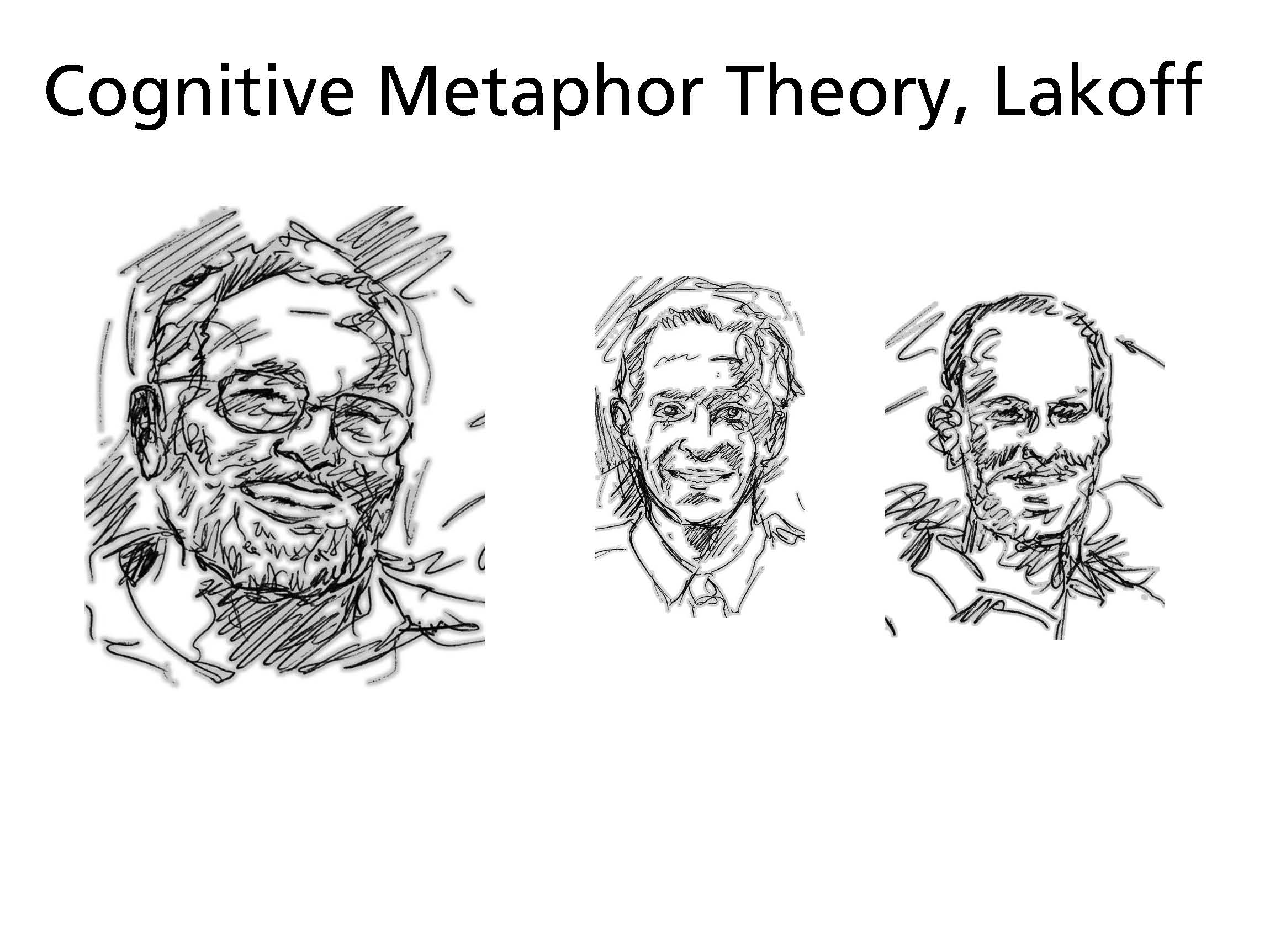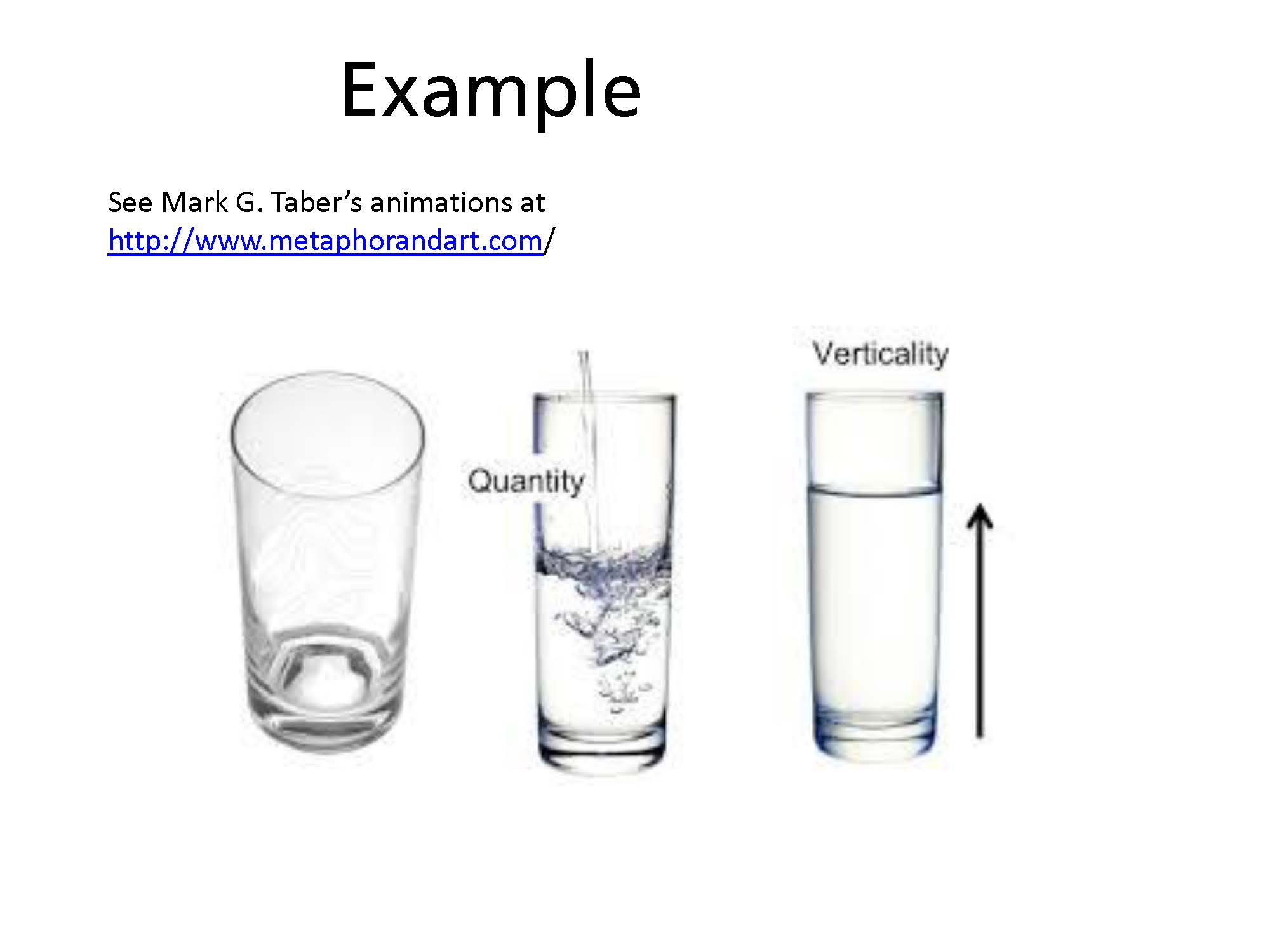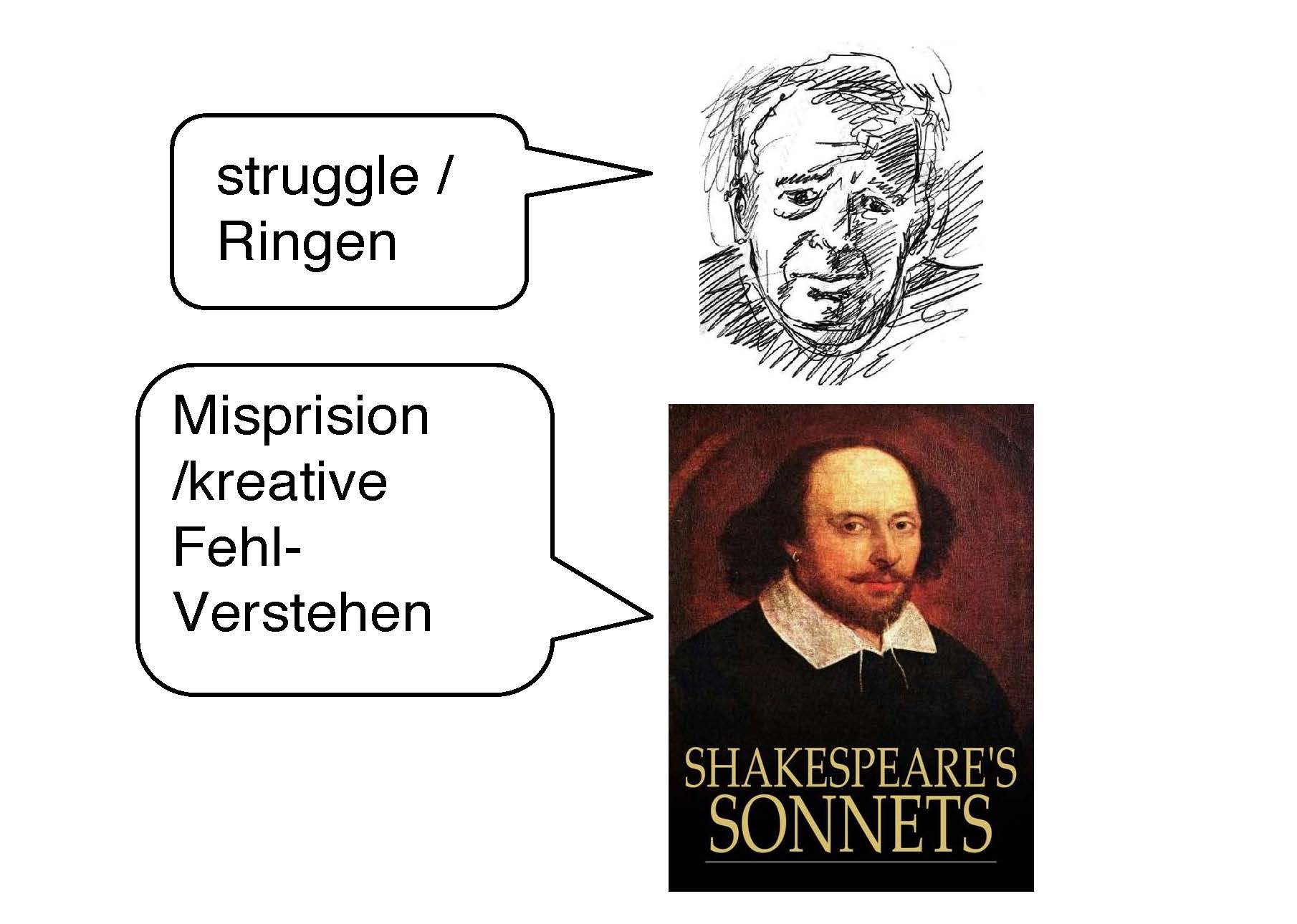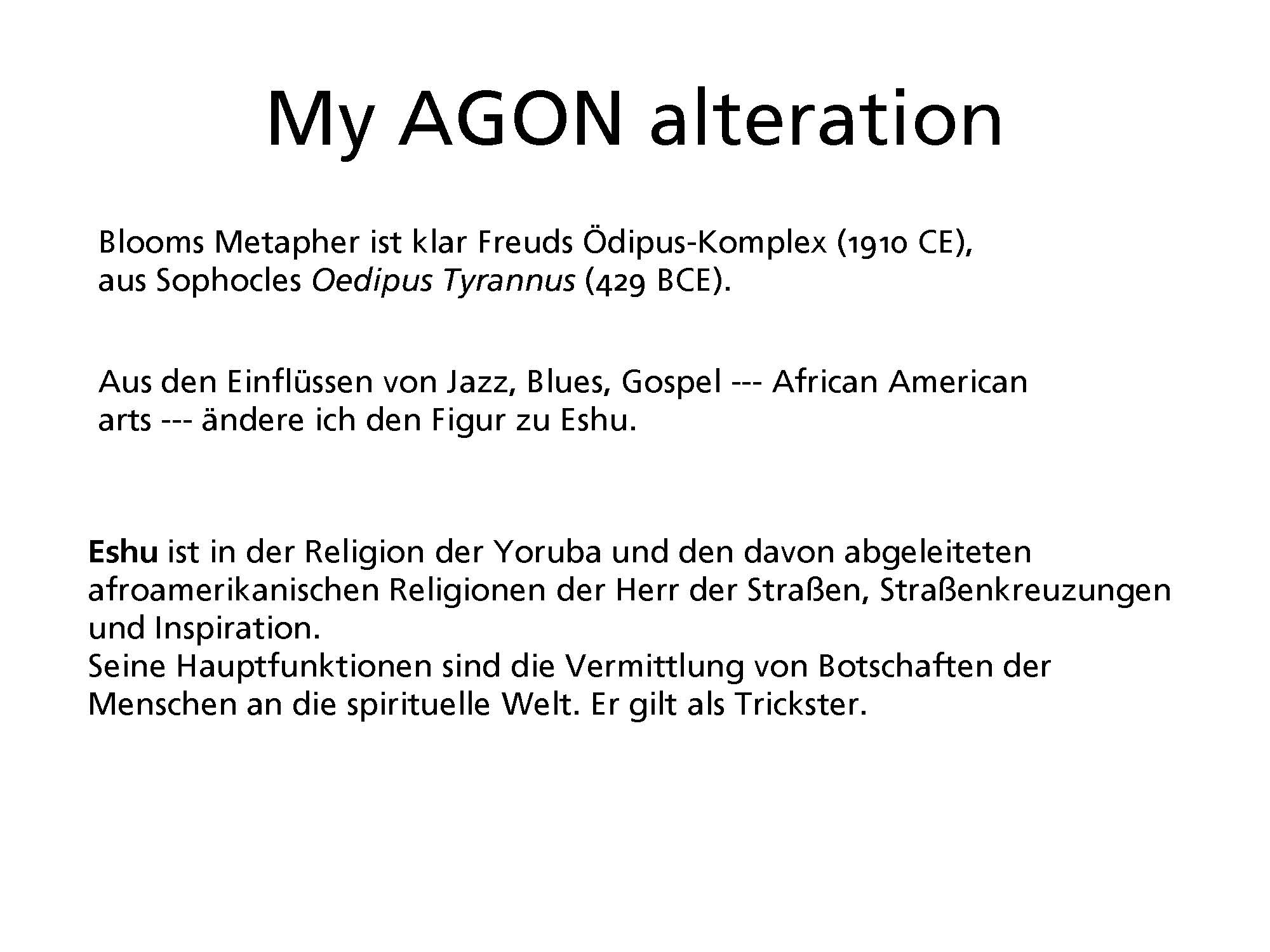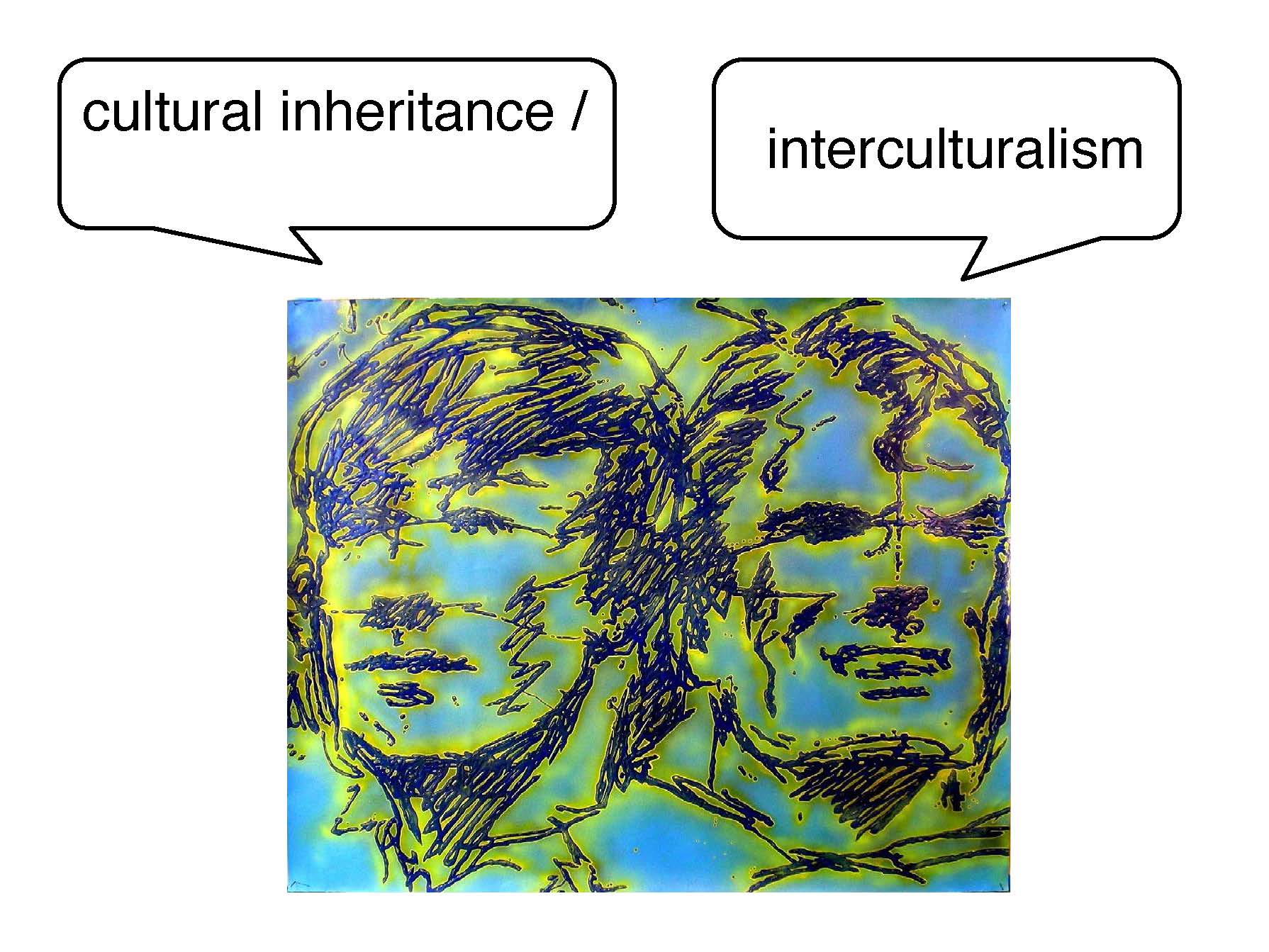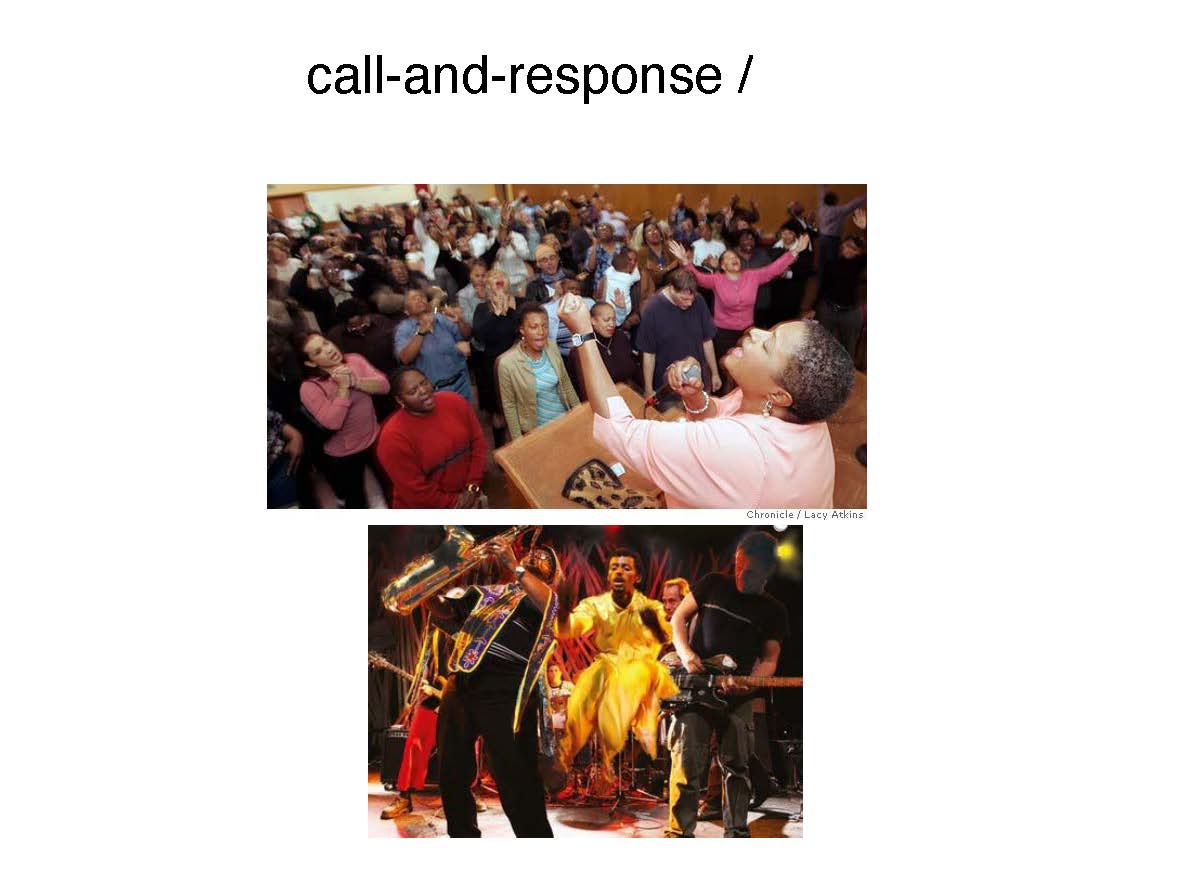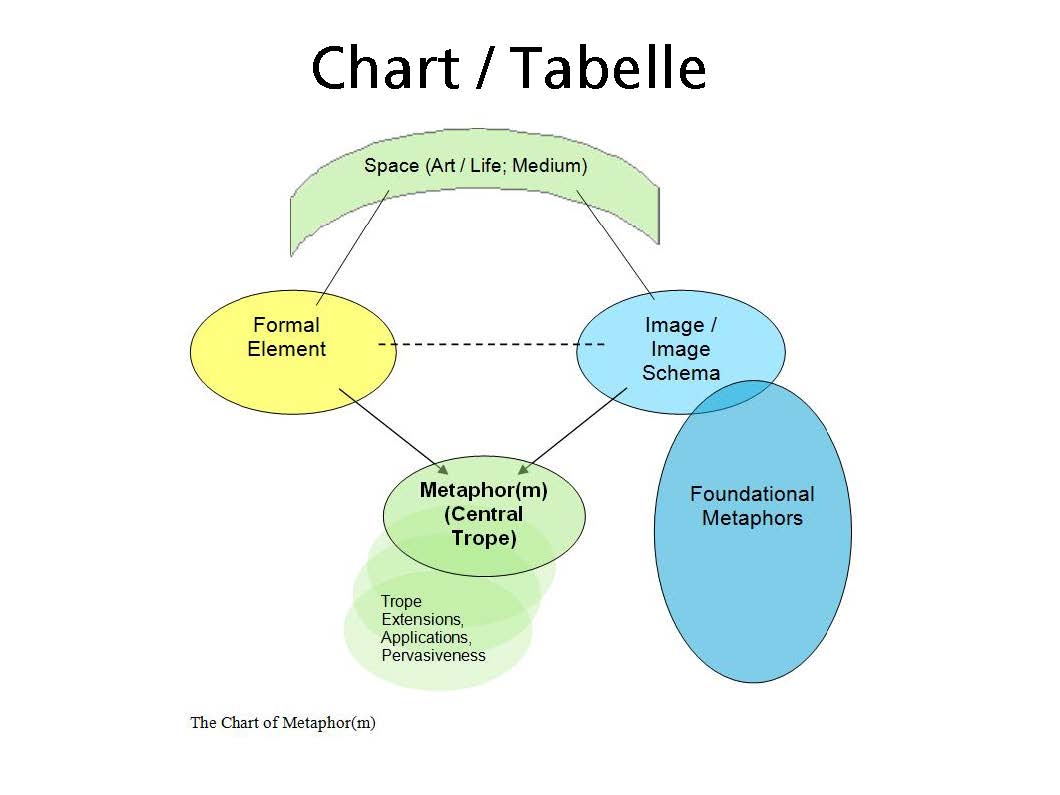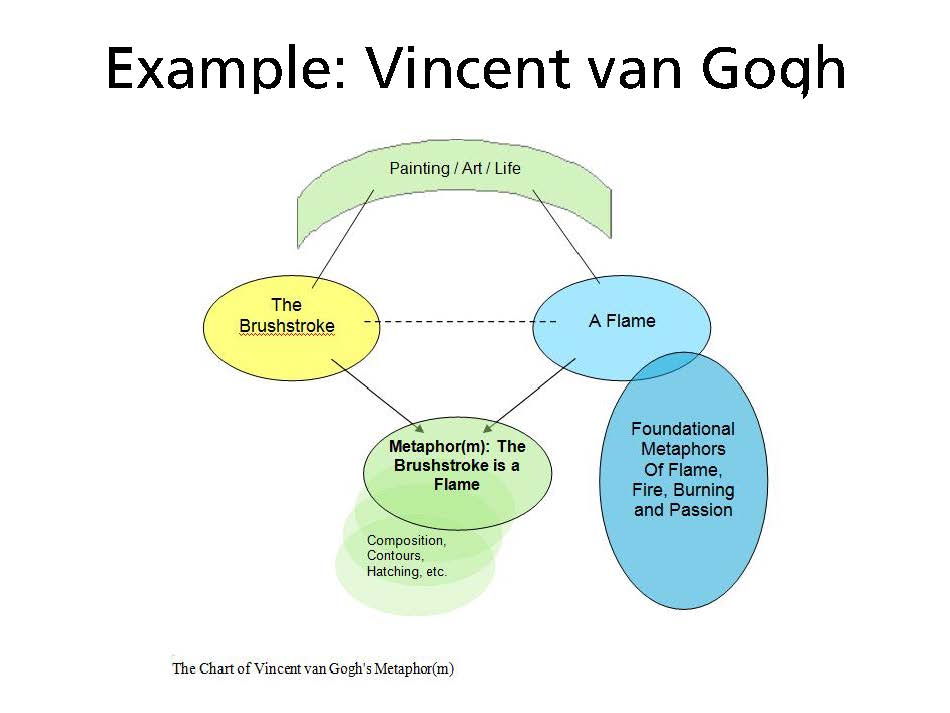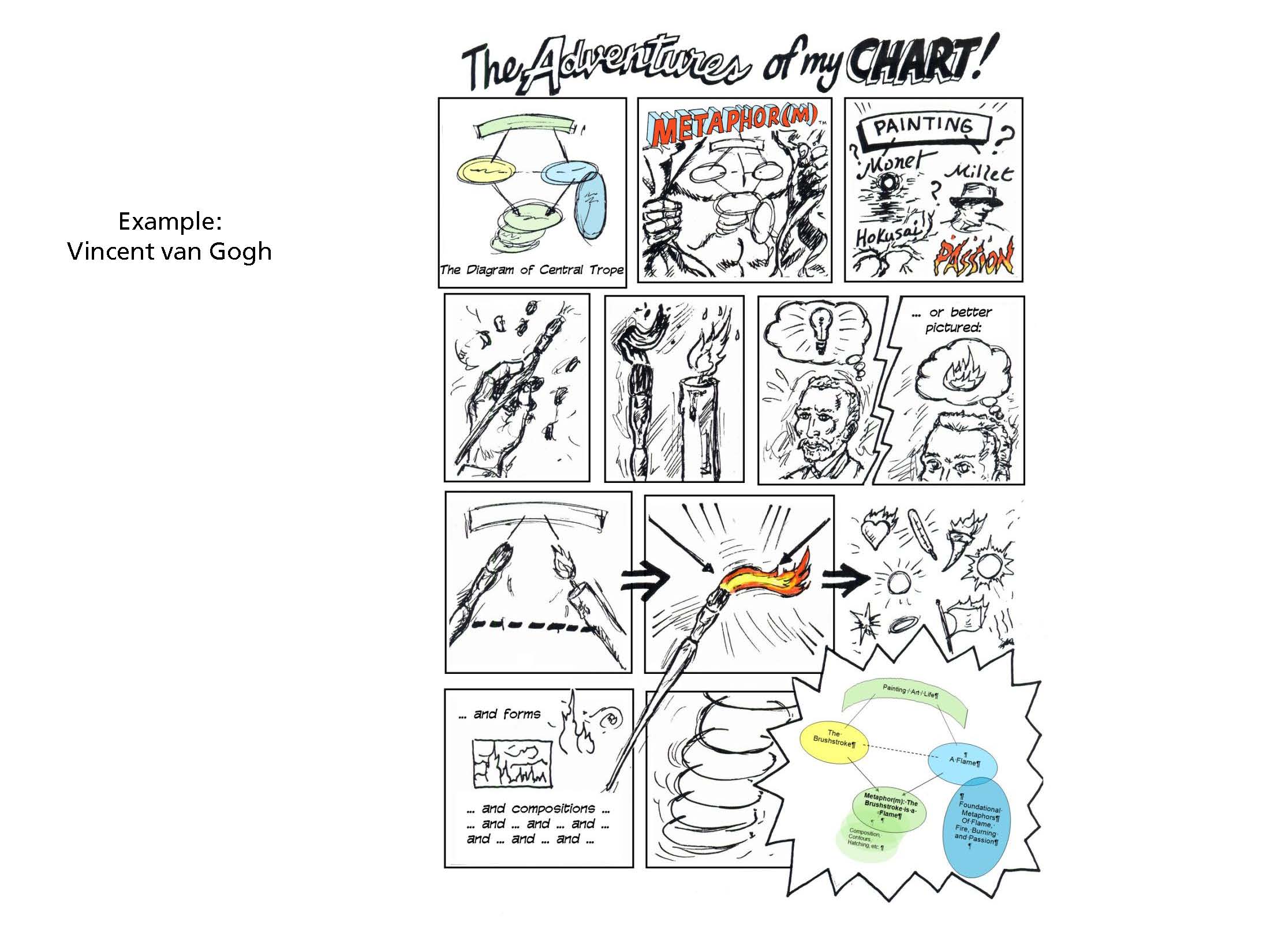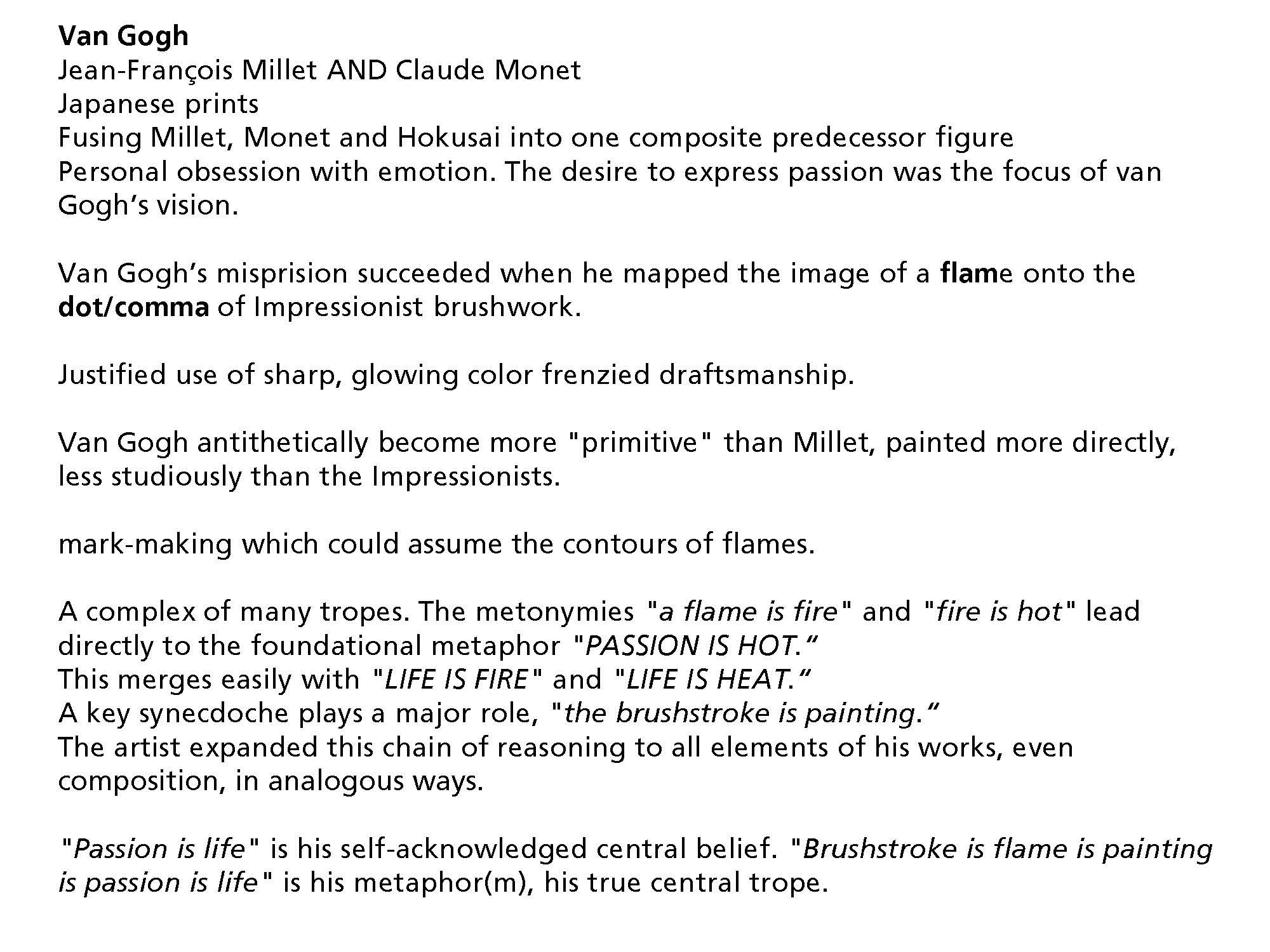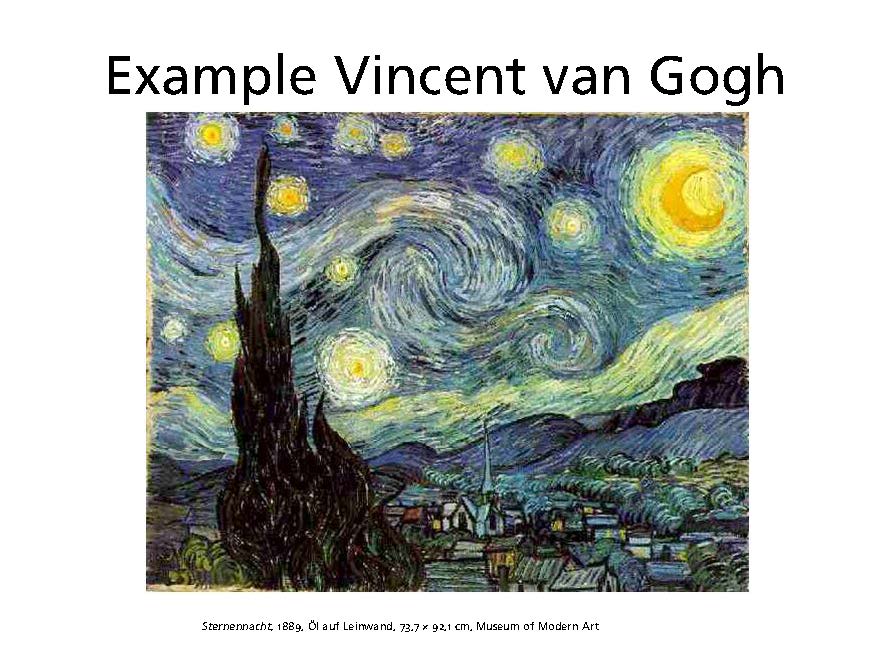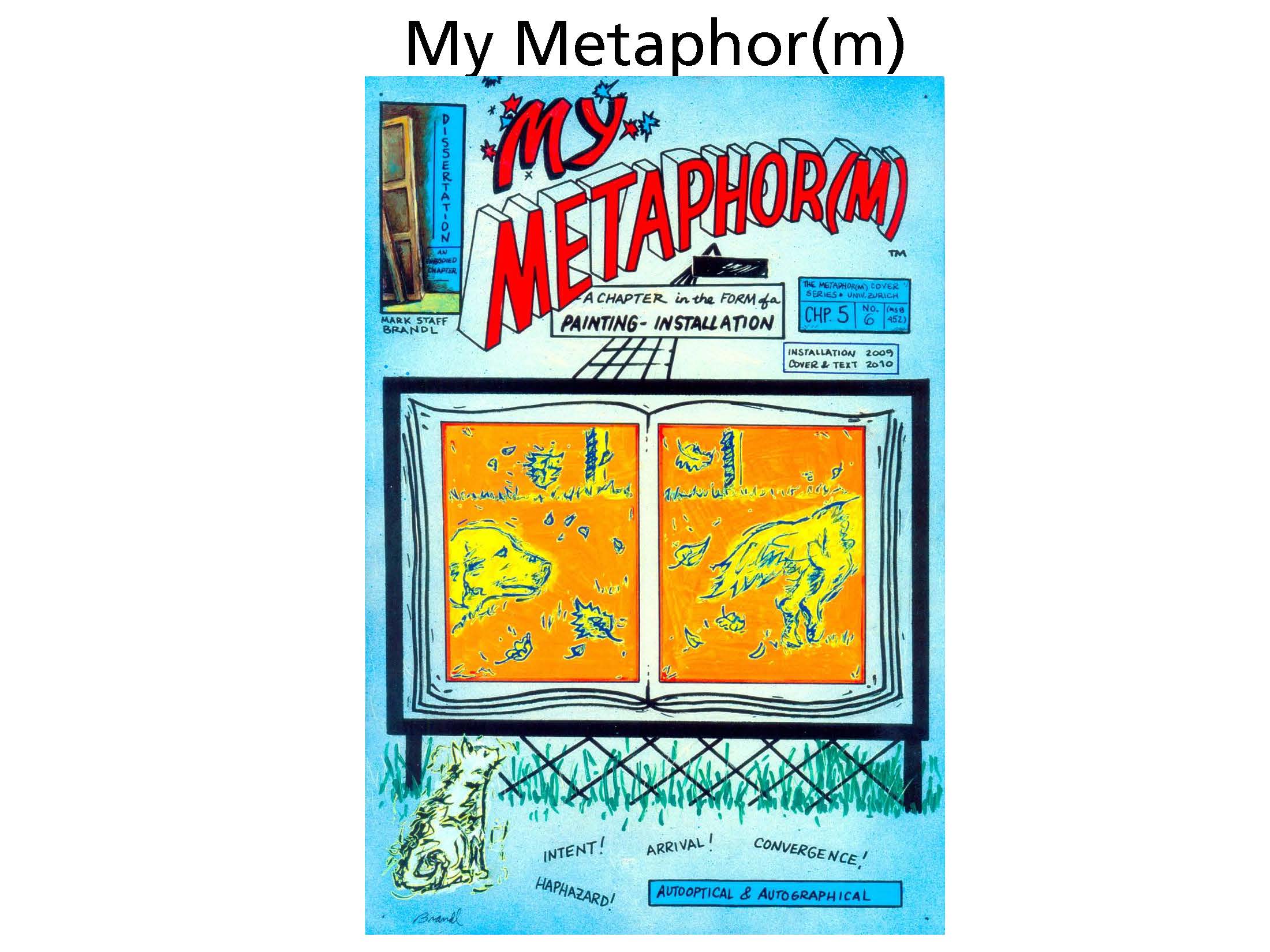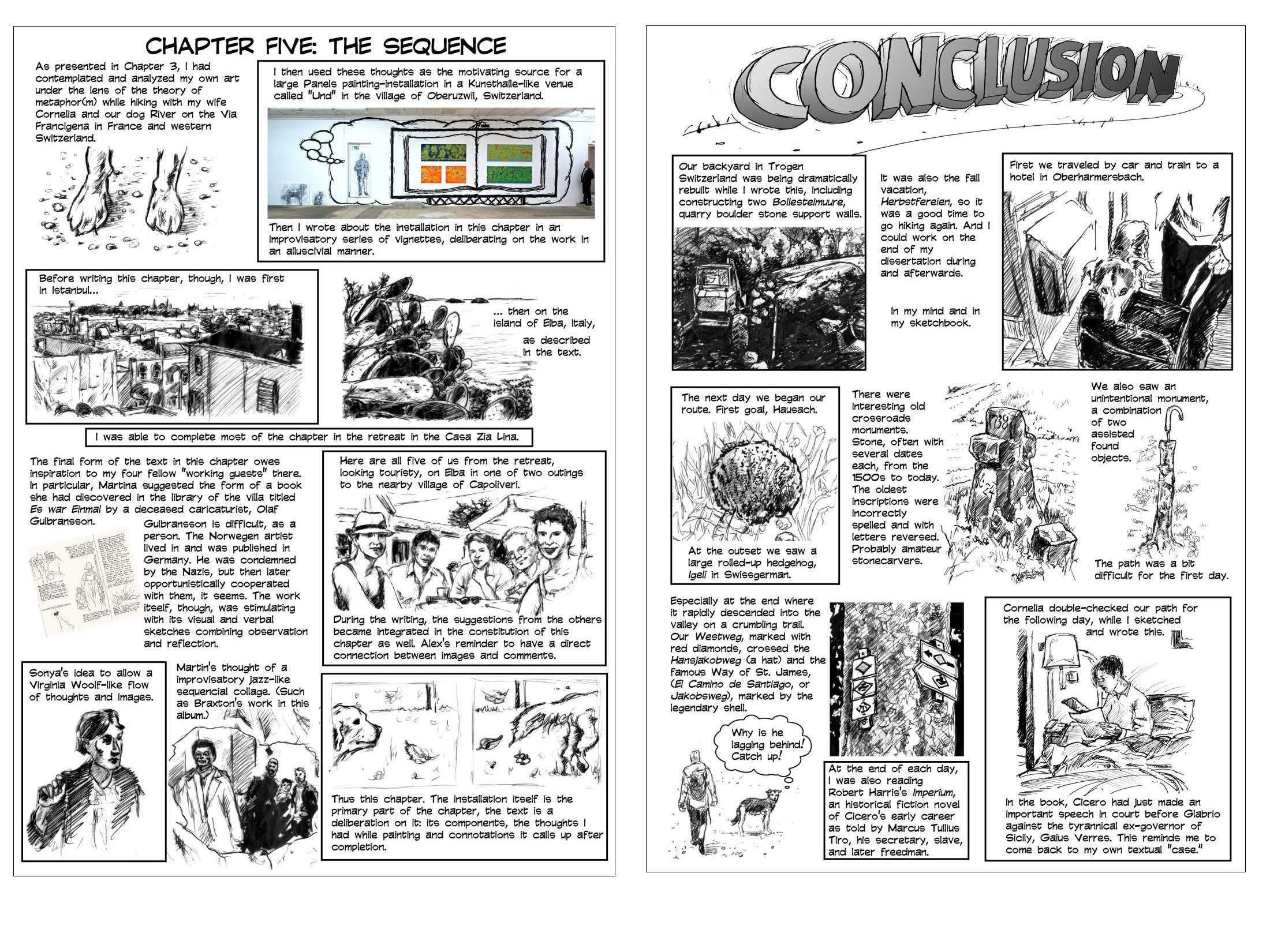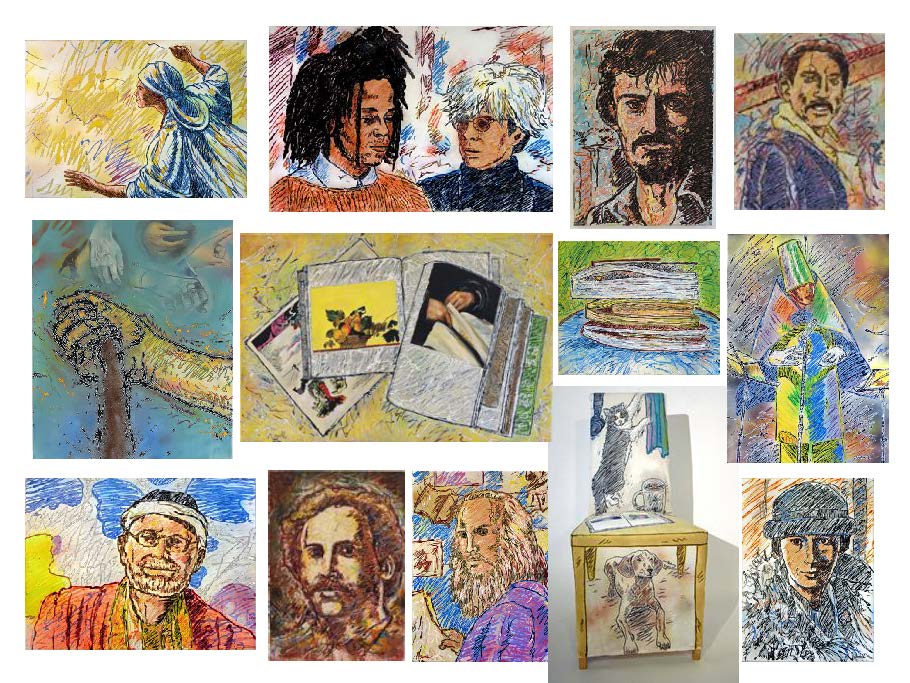%20logo1.jpg)
..[T]he human conceptual system is metaphorically structured and defined. George Lakoff and Mark Johnson1
This website, based on my dissertation, presents, describes, investigates, performs, illustrates (thanks to Mark G.Taber) and often embodies an original theory of trope in art. My proposition is that the formal, technical and stylistic aspects of creators’ styles concretely embody content in new, yet culturally and historically antithetical ways. One central trope of form is sought and discovered by creators. This tool allows them to express their desires, both those willed and those discovered within the trope. The term metaphor(m) used in the title is a pun. Puns can be particularly slippery when used in theories. However, this one works so well I consider it, only partially tongue-in-cheek, to belong to me as a trademark: Metaphor(m)™, as can be seen throughout this dissertation on the paintings which begin each chapter.2 This word describes and embodies the core of my theory — that such tropes in the hands of artists and authors are both metaphoric and meta-form.
My claim is that a vocabulary of “foundational cognitive metaphors” is at work in the formal, technical, and stylistic aspects of the works of artists and other creators. One central trope is brought into being through a figurative vision of one or more aspects of the form, most often by way of what George Lakoff and Mark Turner refer to as “image mapping” or “image schemes.”3 This central trope may be located in construction, composition, paint handling, color, dialogue, syntax, or other qualities of the aesthetic object. It can be a complex comprised of various metaphors, metonymies and other figurative forms. These may be intricate, extended, elaborated, composed, questioned, and/or otherwise manipulated.
The personal and cultural process lying at the heart of the discovery of creators’ individual metaphor(m)s is the antithetical struggle they enter into with their precursors. This is the “agon,” a battle based in love and fear, so well described by Harold Bloom. His inspired concept of misreading, or misprision as he calls it, borrowing a wonderful word from Shakespeare, offers the important clarification of why the invention of a metaphor(m) takes place. His “agonistic” revisionism, cognitive metaphor, and the theory of central trope interlock with reciprocal rapport.4
And now, a browser version PowerPoint prentation I use when I explain my theory in public lectures.
